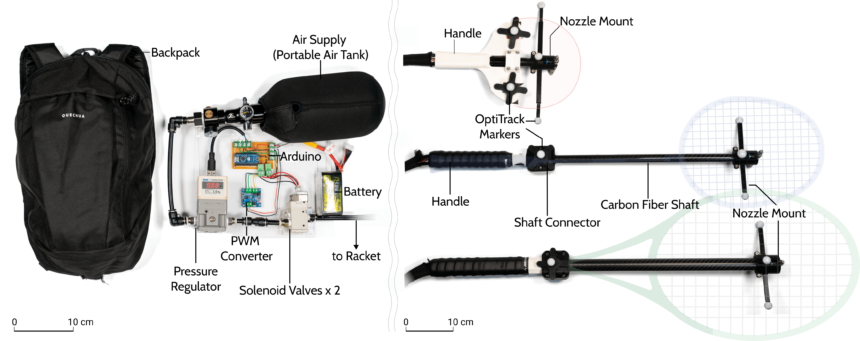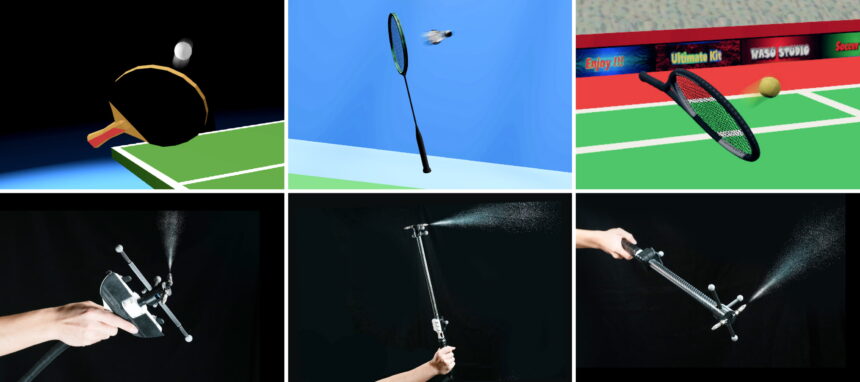AirRacket: Air pressure simulates racket haptics in VR

Haptic VR engineers are not running out of ideas: A racket grip drilled out with a compressed air nozzle is designed to improve the feel of the ball in virtual racket sports like tennis.
Current VR controllers can already simulate some rackets quite well, and this works credibly for racket sports with rather gentle ball touches like golf, table tennis or badminton.
But the subtleties like hardness or the angle of impact that experienced athletes can feel in reality and intuitively factor into their game are missing in VR simulations. In racket sports with harder, larger balls like tennis or baseball, the power is also missing.
Using air pressure to achieve realistic VR haptics
Researchers at National Taiwan University in Taipei are trying to recreate these complex haptics and stronger force with a fine-grained air pressure simulation. To achieve this, they attached an air pressure nozzle to a generic extendable racket handle, which in VR becomes a racket that matches the sport.
Compressed air is forced into the nozzle from a portable compressor housed in a backpack as soon as the virtual ball hits the bat. Since the air is expelled in different directions depending on how you hold the racket, the system can also simulate the impact angle of the ball.

The structure of the AirRacket. | Image: Airracket
For tracking, the researchers attach an Optitrack system to the tip of the racket handle. Alternatively, a Vive tracker with SteamVR can also do the tracking, but it is heavier. The air nozzle is a common model for paintball guns.
Optical illusions strengthen the haptic sensation
The researchers set out to simulate table tennis, badminton and tennis, three of the most popular racquet sports, which they hoped to improve with better ball feel in virtual reality. Initial tests showed that the haptic system could increase immersion and precision in these racquet sports.
This also works thanks to an optical trick: the force visualized in VR, especially the length of the impact (350 ms versus 50 ms), can make the perceived force appear about four times stronger than the force actually emitted by the nozzle.
The compressor solution may be too complex for home use, but location-based VR experiences or professional training offerings could potentially increase immersion and training impact with such a system.

The researchers are initially focusing on table tennis, badminton and tennis. However, the haptics system should work for many other racquet sports or even swords.
The researchers offer other 3D printable grips for field field hockey, golf, baseball, swords and squash. Detailed information about AirRacket and code downloads are available on Github.
Note: Links to online stores in articles can be so-called affiliate links. If you buy through this link, MIXED receives a commission from the provider. For you the price does not change.